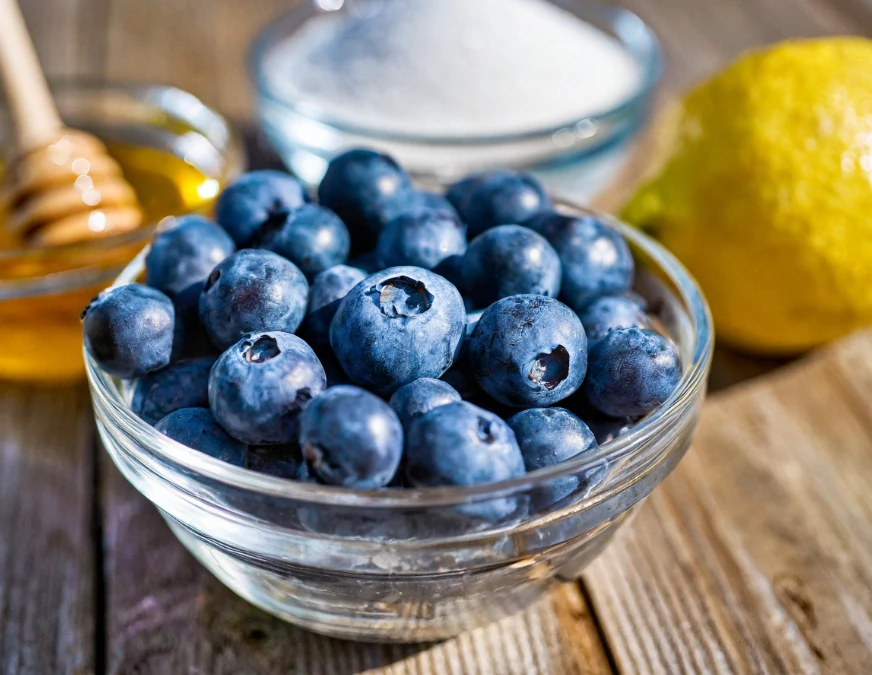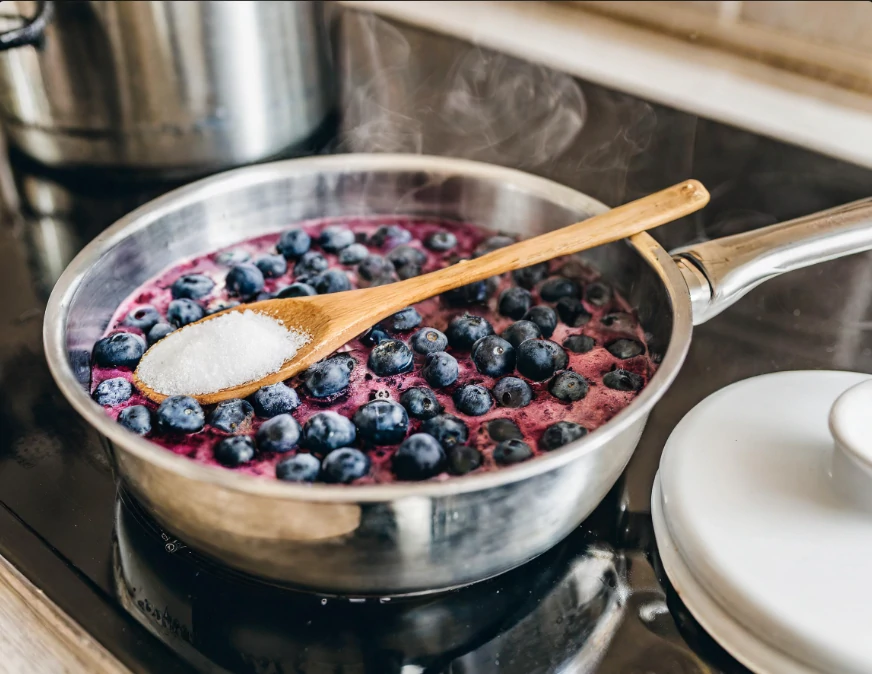
Blueberry glaze, with its vibrant color and sweet-tart flavor, has become a cherished addition to various dishes, from decadent desserts to savory entrees. This versatile condiment can transform the ordinary into the extraordinary, elevating the taste profile of every dish it graces. Originating from a simple combination of blueberries and sugar, the glaze has evolved into a gourmet ingredient that can be customized with various flavors and ingredients to suit any culinary creation.
Understanding Blueberry Glaze
What is Blueberry Glaze?
Blueberry glaze is a thick, syrupy sauce made primarily from blueberries, sugar, and sometimes lemon juice to balance the sweetness with a touch of acidity. It’s cooked down until the blueberries burst, releasing their natural pectin, which helps thicken the sauce to its iconic glaze consistency.
Key Ingredients

- Blueberries: The star of the glaze. Fresh blueberries are preferred for their natural sweetness and vibrant color, but frozen blueberries can also be used, especially out of season.
- Sweeteners: Sugar is traditionally used, but honey, maple syrup, or agave nectar are excellent alternatives for a different flavor profile or to accommodate dietary preferences.
The Process of Making Glaze

Creating the perfect blueberry glaze involves simmering the blueberries with a sweetener until the berries have softened and the mixture has thickened. Cornstarch or a reduction technique can be used to achieve the desired consistency, making the glaze an ideal topping for cakes, pancakes, or even savory dishes like roasted meats.
Culinary Applications
Blueberry glaze is not only limited to topping pancakes or cheesecakes; its applications span a wide range of culinary delights:
- Desserts and Pastries: From glazing donuts to swirling into cheesecakes or topping ice cream, the glaze adds a burst of flavor and color.
- Savory Dishes: It can be brushed onto grilled meats or served as a sauce for roasted poultry, providing a sweet contrast to the savory elements.
For those interested in expanding their culinary repertoire, consider exploring other fruit-based glazes, such as the Guava Paste Recipe, which showcases the versatility of fruit in creating rich, flavorful condiments that can enhance both sweet and savory dishes.
As we continue our exploration of blueberry glaze, let’s delve into more advanced recipes and practical tips for perfecting this delightful condiment.
Advanced Recipes and Tips
Exploring innovative ways to incorporate blueberry glaze into your cooking can add exciting new flavors and textures to your dishes. Here are some creative recipes and expert tips to help you make the most of this versatile glaze.
Innovative Recipes Using Blueberries Glaze
- Cakes and Cheesecakes: Elevate your baking by incorporating blueberry glaze as a topping or swirl it directly into the batter before baking for a burst of blueberry flavor.
- Glazed Meats: Pairing blueberry glaze with meats such as pork, chicken, or even salmon creates a balance of sweet and savory that is sure to impress. The glaze caramelizes beautifully under heat, providing a stunning finish and delicious taste.
Tips for Perfecting Your Glaze
- Consistency Adjustments: If your glaze is too thin, simmer it for a longer period to reduce the liquid. For a quicker fix, a small amount of cornstarch mixed with water can be added to thicken it up.
- Flavor Enhancements: Experiment with adding spices such as cinnamon, nutmeg, or vanilla to complement the blueberry flavor. A splash of lemon juice can also add brightness and balance the sweetness.
Health Benefits
Beyond their delicious taste, blueberries bring a host of health benefits to your blueberry glaze. Rich in vitamins, minerals, and antioxidants, blueberries can contribute to heart health, brain function, and even help regulate blood sugar levels. Incorporating blueberries glaze into your diet is a tasty way to enjoy these benefits.
FAQs
- Can I use frozen blueberries to make glaze? Yes, frozen blueberries work well in glazes, especially when fresh ones aren’t available. There’s no need to thaw them before use.
- How do I store blueberry glaze and for how long? Store it in an airtight container in the refrigerator for up to a week. For longer storage, it can be frozen for up to three months.
- Can blueberry glaze be frozen for later use? Absolutely, freezing blueberry glaze is a great way to preserve its freshness. Just thaw it overnight in the refrigerator before use.
As you embrace the versatility of blueberry glaze, remember to experiment with different ingredients and applications. Whether drizzling it over a dessert or incorporating it into a savory dish, the possibilities are endless. For more culinary inspiration, consider exploring additional dessert recipes like the Lemon Blondies, which could be enhanced with a blueberry glaze drizzle for an extra burst of flavor. Embrace the creativity and enjoy the journey of discovering the many ways to incorporate blueberry glaze into your cooking repertoire.

Blueberry Glaze: Elevate Your Dishes with Sweet and Tart Flavors
Ingredients
- Blueberries: 2 cups fresh or frozen
- Sugar: 1/2 cup granulated white sugar
- Honey: 2 tablespoons as an optional alternative or addition to sugar for added depth of flavor
- Lemon Juice: 1 tablespoon freshly squeezed, to balance the sweetness and add brightness
- Cornstarch: 1 tablespoon mixed with 2 tablespoons of water, for thickening the glaze if necessary
Instructions
- Desserts and Pastries: From glazing donuts to swirling into cheesecakes or topping ice cream, the glaze adds a burst of flavor and color.
- Savory Dishes: It can be brushed onto grilled meats or served as a sauce for roasted poultry, providing a sweet contrast to the savory elements.
